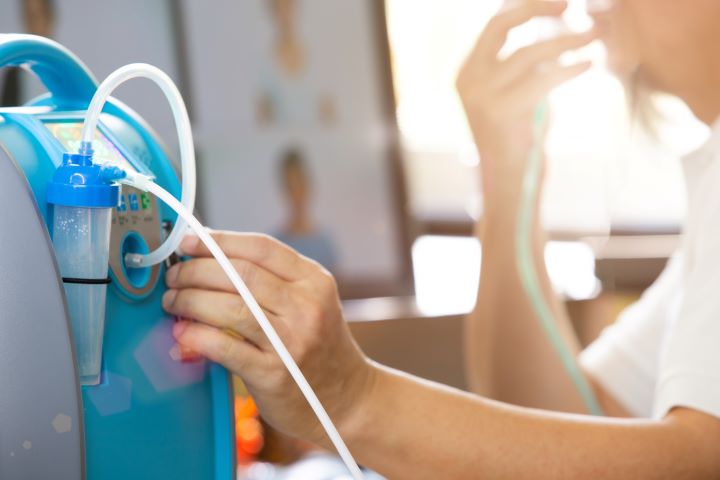Portable Oxygen Concentrators: Complete Guide to Mobile Respiratory Support
Portable oxygen concentrators represent a significant advancement in respiratory care technology, offering freedom and mobility to individuals requiring supplemental oxygen therapy. These compact medical devices extract oxygen from ambient air, concentrating it to therapeutic levels while eliminating the need for heavy oxygen tanks or stationary equipment.

What Are Portable Oxygen Concentrators?
Portable oxygen concentrators are lightweight, battery-powered devices that filter and concentrate oxygen from the surrounding air. Unlike traditional oxygen tanks, POCs don’t require refilling and can be easily carried or wheeled around. They work by drawing in air, removing nitrogen, and delivering concentrated oxygen to the user through a nasal cannula or mask. POCs are designed for both continuous flow and pulse dose delivery, catering to different oxygen needs and preferences.
How Do Portable Oxygen Concentrators Work?
POCs operate on a principle called pressure swing adsorption (PSA). This process involves:
-
Air intake: The device draws in ambient air.
-
Compression: The air is pressurized.
-
Filtration: Nitrogen is removed using molecular sieves.
-
Concentration: Oxygen is concentrated to therapeutic levels.
-
Delivery: Purified oxygen is delivered to the user.
This continuous cycle ensures a steady supply of oxygen without the need for refills or bulky equipment.
What Are the Benefits of Using a Portable Oxygen Concentrator?
Portable oxygen concentrators offer numerous advantages over traditional oxygen therapy methods:
-
Mobility: Users can easily travel and maintain an active lifestyle.
-
Independence: No need for regular oxygen tank deliveries or refills.
-
Safety: Eliminates risks associated with pressurized oxygen tanks.
-
Convenience: Compact size allows for use in various settings, including air travel.
-
Cost-effective: Long-term savings compared to recurring oxygen tank rentals.
These benefits contribute to improved quality of life and greater freedom for individuals requiring supplemental oxygen.
What Are Important Features to Consider When Choosing a POC?
When selecting a portable oxygen concentrator, consider the following key features:
-
Weight and size: Ensure the device is manageable for your lifestyle.
-
Battery life: Look for models with long-lasting batteries or easy battery swapping.
-
Oxygen output: Choose a POC that meets your prescribed oxygen flow rate.
-
Noise level: Opt for quieter models for comfort during daily use and sleep.
-
FAA approval: If you plan to travel by air, select an FAA-approved device.
-
Durability: Consider models with robust construction for long-term use.
-
User interface: Look for intuitive controls and clear displays.
Evaluating these features will help you find a POC that best suits your individual needs and lifestyle.
How Do You Evaluate Various Models of Portable Oxygen Concentrators?
When comparing different POC models, consider the following factors:
-
Oxygen delivery method: Continuous flow vs. pulse dose
-
Maximum oxygen output: Measured in liters per minute (LPM)
-
Battery life and charging options
-
Weight and portability
-
Altitude performance
-
Warranty and customer support
-
Additional features like Bluetooth connectivity or smartphone apps
It’s crucial to consult with your healthcare provider to ensure the chosen model meets your specific medical requirements.
What is the Average Price Range of Portable Oxygen Concentrators?
Portable oxygen concentrators vary widely in price, depending on features, brand, and capabilities. Here’s a general overview of the price ranges:
| Category | Price Range | Features |
|---|---|---|
| Entry-level | $1,500 - $2,500 | Basic functionality, lower oxygen output |
| Mid-range | $2,500 - $3,500 | Improved battery life, higher oxygen output |
| Premium | $3,500 - $6,000+ | Advanced features, longest battery life, highest oxygen output |
Prices, rates, or cost estimates mentioned in this article are based on the latest available information but may change over time. Independent research is advised before making financial decisions.
It’s important to note that many insurance plans, including Medicare, may cover part or all of the cost of a POC when prescribed by a doctor. Additionally, some providers offer rental options, which can be more cost-effective for short-term use.
How Can You Enhance Your POC’s Effectiveness?
To maximize the benefits of your portable oxygen concentrator:
-
Follow manufacturer guidelines for maintenance and cleaning.
-
Keep spare batteries charged and readily available.
-
Use a humidifier attachment if recommended by your doctor.
-
Regularly check and replace filters as needed.
-
Keep your device protected from extreme temperatures and moisture.
-
Consider accessories like carrying cases or backpacks for easier transport.
-
Stay in touch with your healthcare provider to adjust settings as needed.
By properly maintaining and utilizing your POC, you can ensure optimal performance and longevity of the device.
In conclusion, portable oxygen concentrators offer a life-changing solution for individuals requiring supplemental oxygen. By understanding their functionality, features, and pricing, users can make informed decisions to select the best device for their needs. With proper care and usage, a POC can significantly improve mobility, independence, and overall quality of life for those with respiratory conditions.
This article is for informational purposes only and should not be considered medical advice. Please consult a qualified healthcare professional for personalized guidance and treatment.




